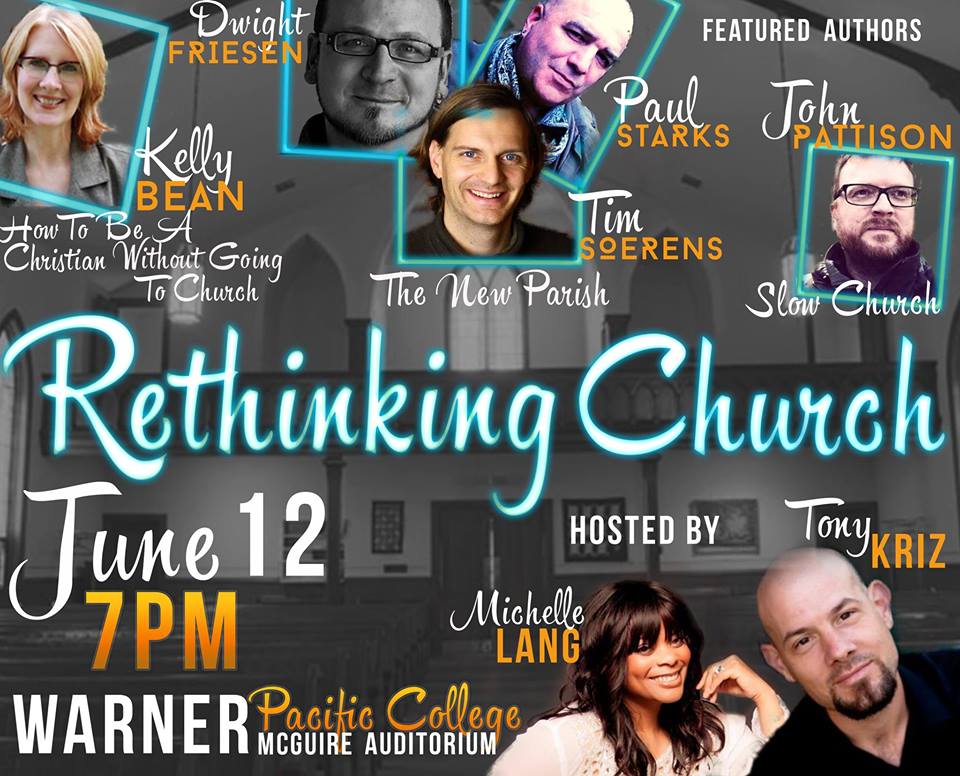Last Thursday, I had the opportunity to participate in a great event at Warner Pacific College called “ReThinking Church.” The event was curated by WP’s Assistant Director of Campus Ministries, Michelle Lang, and by Tony Kriz, author of the wonderful Neighbors & Wise Men. Along with the other featured speakers — Kelly Bean, whose How to be a Christian without Going to Church comes out early next month, and the three authors of the essential book, The New Parish — I was asked to help “imagine afresh what faith-gathering can and must look like in our radically shifting world.”
I am going to talk more about the event in another post on Thursday. In the meantime, I wanted to share a list Chris and I compiled of suggested practices to enact a new way of thinking about church. Kelly Bean and The New Parish authors created wonderful lists on this topic too. Here was our contribution:
- Create space for open, honest conversation in your church community.
- Find ways to regularly eat together with your church and your neighbors. Perhaps work your way through Maggie Stuckey’s fabulous cookbook, Soup Night: Recipes for Creating Community Around a Pot of Soup.
- Identify a few of the people, places, rhythms, and shared beliefs that give your community its unique taste and texture. Talk about how your church can tease out some of the delicious flavors already present there.
- Create an asset-map of your congregation and neighborhood. Pay particular attention to the gifts of those we tend to marginalize: the young and the old, those with physical or emotional challenges, and so on.
- Play together. Our kids can remind us how it’s done. (This is inspired by our friends at Fountain Parish in Bellingham, Washington. They do this well.)
- Carefully study the history of your church and its neighborhood. Where do those stories intersect?
- We often practice Sabbath as individuals, when we practice it at all. Explore what it might mean to practice “Sabbath rest and delight” as a church community.
- Find creative ways to orchestrate the diverse skills and gifts of your church’s members (plumbers, writers, entrepreneurs, teachers, everyone) in the local mission of the church.
- Think about the how and why of what you’re already doing. For example, does your faith community sing, pray, and study scripture together in order to be productive and “get something done”? If so, how can these practices be re-oriented toward deep presence?
- Designate someone as your church’s “memory keeper,” someone to record the stories of God’s faithfulness in your church and in your neighborhood. At least once a year, recite those stories, rehearse them together, and remember well God’s provision.
What are some other simple, practical ways we can begin enacting fresh ways of being the church together?













